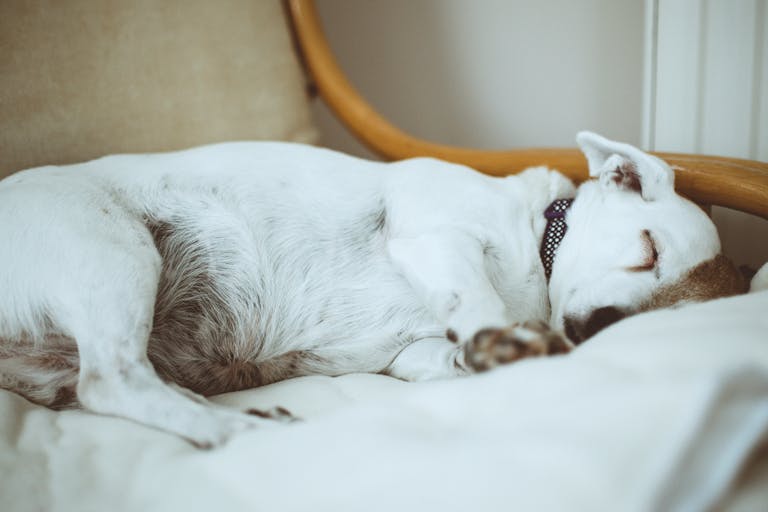Are Leather Collars Better For Dogs? Expert Views on Dog Collar Choices
When it comes to picking the right dog collar, most pet owners find themselves stuck between two popular options: a leather dog collar or a nylon dog collar. Both have their loyal fans and strong benefits, but which is truly the best choice for your pet? and Are Leather Collars Better For Dogs?
As a dog owner, I remember when my Labrador shredded two nylon ones during puppyhood. It wasn’t until I bought a premium leather collar that I noticed the difference—it looked stylish, fit perfectly, and actually lasted. But of course, every collar material has pros and cons. This guide covers everything you need to know about leather, nylon, and which collar for your dog makes the most sense.
Disclaimer: Pet Care Idea is a participant in the Amazon Services LLC Associates Program, an affiliate advertising program designed to provide a means for websites to earn advertising fees by advertising and linking to Amazon.com. As an Amazon Associate, we earn from qualifying purchases.
Table of Contents
What Are the Benefits of Leather Dog Collars?

Benefits of Leather Collars for Durability
One of the biggest benefits of leather collars is their durability. Unlike nylon, which tends to fray over time, a quality leather collar ages well and softens with use. Many dog owners find that a well-crafted leather collar will last years, even becoming more comfortable for their pup.
A friend of mine has a Golden Retriever who’s been wearing the same full-grain leather collar for four years. With some leather conditioner every few months, it still looks brand new. That’s the kind of collar material investment that pays off.
Stylish and Functional
Leather collars aren’t just tough—they’re also stylish. Whether you choose a classic brown rolled leather collar or a black premium leather design, they often look more polished than synthetic dog collars. For pet owners who care about aesthetics, the leather one often wins.
Natural Material: Safe for Your Pet
Leather is a natural material, meaning fewer chemicals compared to synthetic materials like nylon webbing or polyester. For dogs with sensitive skin, this can be a real comfort. Since leather used in collars is breathable, your dog’s collar is less likely to cause irritation.
Leather vs Nylon Dog Collar: Which Should You Choose?
Durability of Leather vs Nylon Dog Collar
When comparing leather vs nylon dog collar designs, both have unique strengths:
| Collar Material | Leather Collar | Nylon Collar |
|---|---|---|
| Durability | Ages well; collar will last years if cared for | Strong in wet conditions but prone to fraying |
| Comfort | Softens with time; molds to dog’s neck | Lightweight; ready to use immediately |
| Style | Classic, premium leather, fashionable look | Wide variety of bright colors & reflective |
| Weather Resistance | Needs care if collar does get wet | Excellent for swimming or humid weather |
| Cost | More expensive than nylon but longer lasting | Affordable, easy to replace |
My Beagle’s nylon collar held up through rainy hikes, but smelled quickly. Switching to a dog’s leather collar meant a bit more upkeep, but it remained odor-free and soft.
Benefits of Leather vs Synthetic Collars
Leather collars offer the best of both worlds—durability and comfort. Unlike synthetic collars, they don’t retain strong odors, and the quality of the leather improves with age.
Leather and Nylon: Which Is Worth It?
While leather and nylon collars both serve their purpose, leather feels like an investment in a leather product that lasts. Nylon is cheaper but may need replacing often. If you want the right collar for longevity, leather often edges out.
How to Choose the Right Collar for Your Dog
Fit for Your Dog
No matter what collar material you choose, proper fit is key. Use the two fingers between the collar rule: snug enough to stay secure, but loose enough so your dog is comfortable.
Collar Features: Buckle, Leash, and Size
- A sturdy buckle ensures safety.
- Matching a leather leash to a collar can complete the set.
- Choose the right size for your dog based on breed and neck measurement.
Types of Leather You Should Know
- Vegetable-tanned leather: Eco-friendly and softer, ideal for dogs with sensitive skin.
- Full-grain leather: The strongest type of leather, develops rich patina.
- Treated leather: A collar made to resist wear and tear.
- If you’re buying a leather option, check the quality of the leather before purchase.
What Are the Cons of Leather?
Cons of Leather Collars
The cons of leather often come down to maintenance. Leather can stiffen or crack if neglected. If the collar gets stuck in water or mud, you’ll need to dry it properly.
Keeping the Collar in Good Condition
To keep it in good shape:
- Wipe with a damp cloth after walks.
- Apply leather cleaner or conditioner occasionally.
- Avoid direct heat when keeping the collar dry.
If your collar does get wet, air-dry it slowly and condition it afterward.
Can a Leather Collar Be Safe for Dogs Who Pull?
Safe for Your Pet and Comfortable
For a dog that pulls, a thick leather collar distributes pressure evenly, reducing strain. That said, if your dog pulls excessively, a harness paired with a dog leash might be safer.
Collar Design and Dog Behavior
When choosing a collar for your dog:
- Active pullers: A harness is safer.
- Calm walkers: A premium leather collar prevents chafing and discomfort.
How to Maintain a Leather Dog Collar
Cleaning and Care
Your dog’s leather collar requires gentle care:
- Wipe with a damp cloth to remove dirt.
- Use leather cleaner occasionally.
- Store properly to ensure the collar remains soft.
Protecting Your Leather Products
- Apply conditioner to keep your dog’s collar supple.
- Pair with leather products like leather wallets or leashes for a consistent style.
- Remember, since leather is natural, it needs routine attention.
Final Thoughts: Are Leather Collars Better For Dogs?
So, is a leather dog collar the best choice for dog owners? The answer depends on your lifestyle:
- If your dog swims, nylon is more practical.
- If you want high-quality leather that lasts years, choose leather.
- For pet parents who value style, durability, and natural material, best leather dog collars are worth every penny.
At the end of the day, the right collar balances safety, comfort, and practicality. Whether you invest in a leather collar or stick with nylon vs leather, what matters most is that the collar prevents harm and lets your dog enjoy every walk.
What are the benefits of leather collars for dogs?
Leather collars offer numerous benefits for dog owners. They are durable and can withstand wear and tear better than synthetic collars. Unlike nylon, leather collars can be more comfortable for dogs, especially those with sensitive skin, as they are less likely to irritate. Additionally, high-quality leather can develop a unique patina over time, making each collar distinct. Investing in a leather collar could also mean a longer-lasting product, which can save you money in the long run.
How does a leather dog collar compare to a nylon dog collar?
When comparing a leather vs nylon dog collar, there are several factors to consider. Leather collars tend to be more durable and stylish, while nylon collars may be lighter and come in various colors. However, a leather collar could be a better choice for dogs that pull, as they often provide more support. On the other hand, nylon collars are generally easier to clean and can be machine-washed, unlike leather collars that require special care.
How do I choose the right leather collar for my dog?
When choosing a leather collar for your dog, consider the size and fit. You should be able to fit two fingers between the collar and your dog’s neck to ensure comfort. Look for collars made from quality leather, such as full-grain or vegetable-tanned leather, which offer durability. Additionally, consider the collar’s width and thickness; thicker collars provide more support for larger dogs, while rolled leather collars are great for smaller breeds.
Can a leather collar get wet, and how should I care for it?
While a leather collar can get wet, it is essential to dry it properly to maintain its quality. If the collar does get wet, wipe it down with a damp cloth and let it air dry away from direct sunlight. Regularly using a leather cleaner can help preserve the leather and keep it looking its best. Avoid exposing the collar to excessive moisture, as this can cause damage over time.
What are the cons of leather collars?
While leather collars have many advantages, there are some cons to consider. They can be more expensive than nylon collars, and if not cared for properly, they may become stiff or cracked. Additionally, leather collars may not be ideal for dogs that enjoy swimming or playing in water, as prolonged exposure can damage the collar. It’s important for dog owners to weigh the pros and cons when deciding on collar material.
Are leather collars safe for my pet?
Yes, leather collars are generally safe for pets, especially if you choose a high-quality leather option. Unlike nylon collars, which can sometimes chafe or irritate a dog’s skin, a well-made leather collar offers comfort and security. However, ensure that the collar fits properly and does not constrict your dog’s movement. Regularly check for wear and tear to keep your dog safe and comfortable.
How can I clean my leather dog collar?
Cleaning your leather dog collar is straightforward. Start by wiping it with a damp cloth to remove dirt and debris. For deeper cleaning, use a leather cleaner specifically designed for leather products. Apply it according to the instructions, and make sure to condition the leather afterward to maintain its softness and prevent cracking. Regular cleaning will help prolong the life of the collar and keep it looking great.
What should I know about buying a leather collar for my dog?
When buying a leather collar for your dog, consider the quality of the leather and the fit for your dog. Look for collars made from premium leather that can withstand daily wear. Measure your dog’s neck to ensure you choose the right size and consider their activity level—active dogs may benefit from thicker collars for added support. Lastly, think about the style and color that will best suit your pet.










